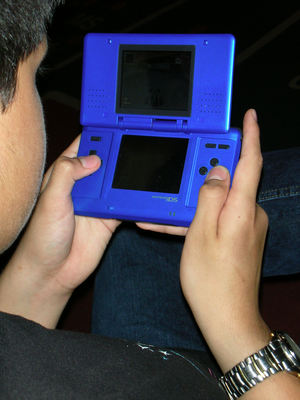In December of 1997 almost 700 Japanese children arrived at hospitals after watching an episode of the popular television show, Pokémon. A number of the children had suffered tonic-clonic, or grand mal, seizures. This photosensitive epilepsy was especially frightening, as it could occur in people who had never had a seizure before.
The Pokémon incident and others like it created a great deal of concern over children watching anime and playing video games. More than a decade later, epilepsy forums are still seeing questions about whether children can safely watch flashing lights of any kind. The most recent technology to raise concerns is that of 3D movies and television. Parents want to know whether watching Avatar and other 3D movies will trigger seizures in epileptics – and if it is possible for the movies to cause seizures in children previously undiagnosed with epilepsy..
Just what is photosensitive epilepsy?
Photosensitive epilepsy refers to epileptic seizures that are triggered by light. Common triggers for photosensitive seizures do include television, computers and video games, especially in the presence of contrasting bright colours and rapidly flashing lights. In addition to anime and video games, music videos can be a trigger for the seizures. Brightly flashing lights at amusement parks, dance clubs or casinos can also be a problem.
Other triggers may surprise the reader. Fluorescent lights, especially when they flicker, can trigger a photosensitive seizure. Natural sunlight reflected off water or snow can cause seizures in photosensitive individuals, as can light filtered through blinds, fences or even trees.
Photosensitive epilepsy: Small minority affected
The Canadian Epilepsy Alliance estimates that less than five percent of known epileptics are photosensitive. A greater number of these are female, but photosensitive seizures are seen more in young men because they tend to play more video games, and therefore are more often exposed to a potential trigger. Children and young adults are more susceptible to photosensitive seizures than those over age 25. Photosensitive seizures also tend to run in families. Some people previously undiagnosed with epilepsy can experience light induced seizures; research has not yet arrived at a reliable figure for how often this occurs.
Recognizing a photosensitive seizure
Because children previously undiagnosed with epilepsy can sometimes experience a photosensitive seizure, parents and teachers should be aware of the risk factors and symptoms. Children often spend a great deal of time exposed to triggers such as fluorescent lights, television, computers and video games, so they should be monitored for signs like rapid blinking, jerking or twitching movement, especially during or just after exposure such as watching a TV show with lots of flashing lights, or playing with a computer or console type video game. Other symptoms may include periods of blank staring or inability to respond when addressed, and reports that things look, sound, feel or smell different than usual. If a photosensitive seizure is suspected, seek medical advice.
Should photosensitive epileptics avoid video games?
When a child has epilepsy, or there is a family history of photosensitive seizures, the knee jerk reaction may be to eliminate triggers like video games completely. Although this may seem to be the safest course, it is not necessarily the recommended approach to prevention. Because the flickering that triggers photosensitive seizures can be encountered in such a wide variety of situations, attempting to eliminate triggers is not practical and could actually result in the loss of healthy activities such as spending time outdoors.
A more balanced approach would consist of working with your health provider to control all seizures with medication, and taking care to establish a healthy lifestyle that minimizes other triggers such as fatigue and undue stress. Some medications like sodium valproate are known to reduce photosensitivity. Other medications that may also be beneficial for this type of seizure include benzodiazepines, ethosuximide (Zarontin,) lamotrigine (Lamictal) and levetiracetam (Keppra.)
Screen time for all children should be kept to no more than two hours per day. Computers and televisions can be placed in public areas of the home to allow parents to monitor children. Avoid large screens, and try to keep a good distance between the child and the screen. Reduce brightness, and keep a subdued light source near the screen. Do not allow photosensitive children to watch television or play video games in the dark. Young people should learn to take breaks, and should be told to turn off video games and other devices if they feel odd. Remote controls should be used to maintain a healthy distance. If the young person must approach the screen, it may help to cover one ey
Some video games are more likely to trigger a seizure than others. Any game with flashing lights, especially changes from red to blue and very quick flashing, is more likely to cause a seizure. Stripes and checker board patterns may also trigger seizures in some people. Opt for games with less flashing and less stark colour contrast, keep televisions and computers where kids can be monitored during use, and have kids ease into new games slowly. Teach kids to enjoy screen time in moderation, and to seek assistance if they think they have had, or will have, a seizure. Many children with epilepsy will recognize their aura, and will know the precautions they should take if they feel a seizure coming on.
Sources:
Drs. Lionel Carmant and Shashi Seshia,”Photosensitive seizures.” Epilepsy Canada
Giuseppe Erba, M.D., “Shedding light on photosensitivity, one of epilepsy’s most complex conditions.” Epilepsy Foundation of America
“Photosensitive epilepsy.” Canadian Epilepsy Alliance



